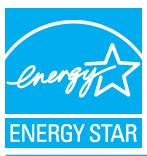 Learn What That Blue Tag Means For Your Energy Bill
Learn What That Blue Tag Means For Your Energy Bill
Even if you’ve downright scurried through a home-improvement store, the Energy Star label has probably caught your eye. And now that you’re searching for an appliance, you’ll probably slow down long enough to see just how valuable this label really is.
In short, the Energy Star label can help you select better home-comfort equipment.
You already know that Energy Star products are stamped with the word “energy†followed by a picture of a star, with a line resembling a rainbow overhead. But more than a catchy logo, Energy Star is a reflection of the fact that the U.S. Environmental Protection Agency is staunchly on the side of consumers when it comes to selecting — and running — energy-efficient appliances and other equipment.
Created in 1992, the program covers central air conditioners, furnaces, water heaters, clothes washers, refrigerators, freezers, dishwashers, window air conditioners, boilers, heat pumps and pool heaters. It does not include ovens, ranges, clothes dryers, humidifiers and dehumidifiers – or at least not yet.
To earn the EPA’s stamp of approval — and the Energy Star label — these products must:
- Be energy efficient
- Demonstrate measurable and verifiable test results
- Allow purchasers to recoup their investment through lower utility bills within a reasonable period of time
The products also must possess some worthy attributes, such as:
- Reliability
- Consistent temperatures
- Balanced humidity
- Proper, healthy airflow
- Quiet operation
When correctly sized and installed, Energy Star-qualified products can save homeowners up to 20 percent on their annual heating and cooling bills, the EPA proudly claims. By any measure, that’s a considerable and impressive return on investment, especially when you consider that the average homeowner spends about $2,000 a year to heat and cool a home.
Consider some specifics: Energy Star-rated furnaces and air conditioners can achieve efficiency levels of up to 97 percent, and qualified window air conditioners use about 10 percent less energy than other air conditioners.
While conceived to provide guidance to consumers, the Energy Star label doesn’t mean that you won’t encounter questions as you shop for an appliance. In this case, don’t hesitate to call on the energy-saving experts at T.F. O’Brien Cooling & Heating. We’ve served the Long Island area since 1934, so we can vouch for the outstanding efficiency these quality products deliver.
Our goal is to help educate our customers about energy and home comfort issues (specific to HVAC systems). For more information about other HVAC topics, download our free Home Comfort Resource guide.
